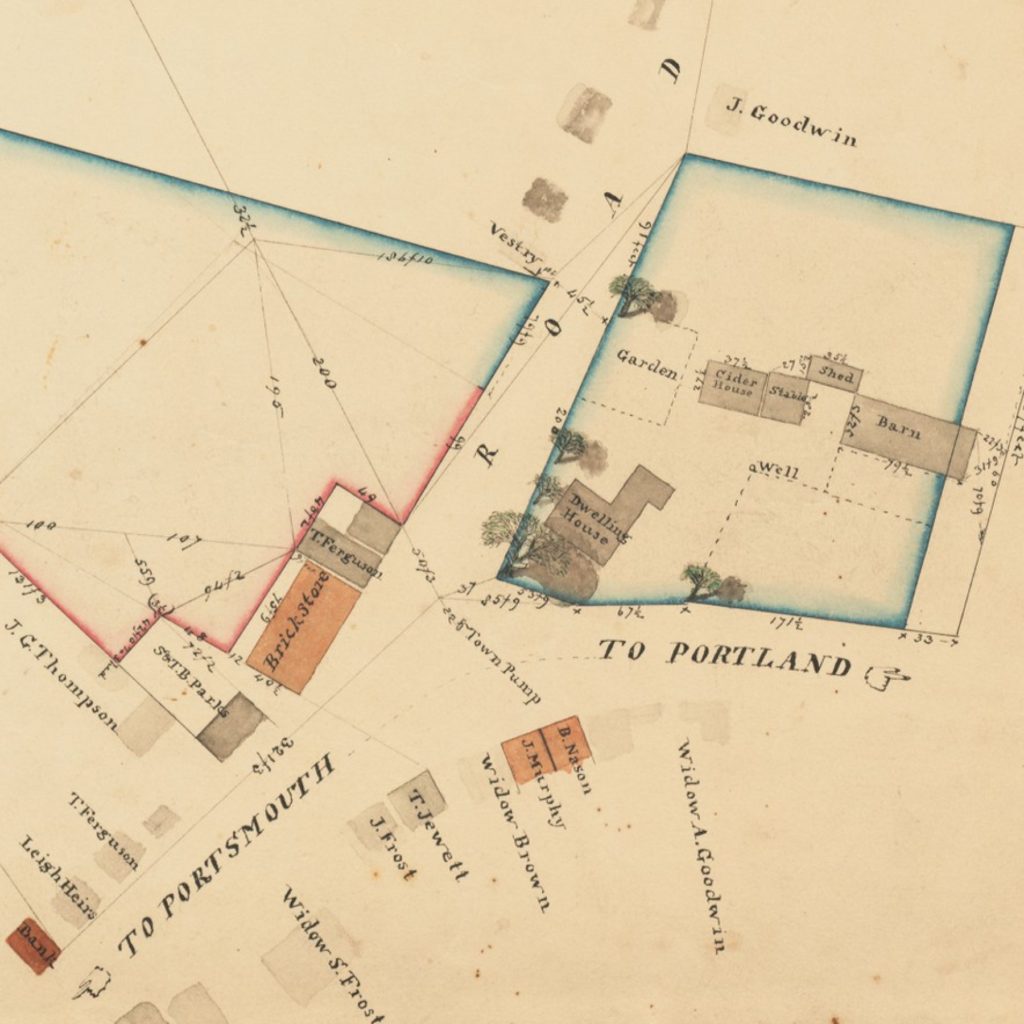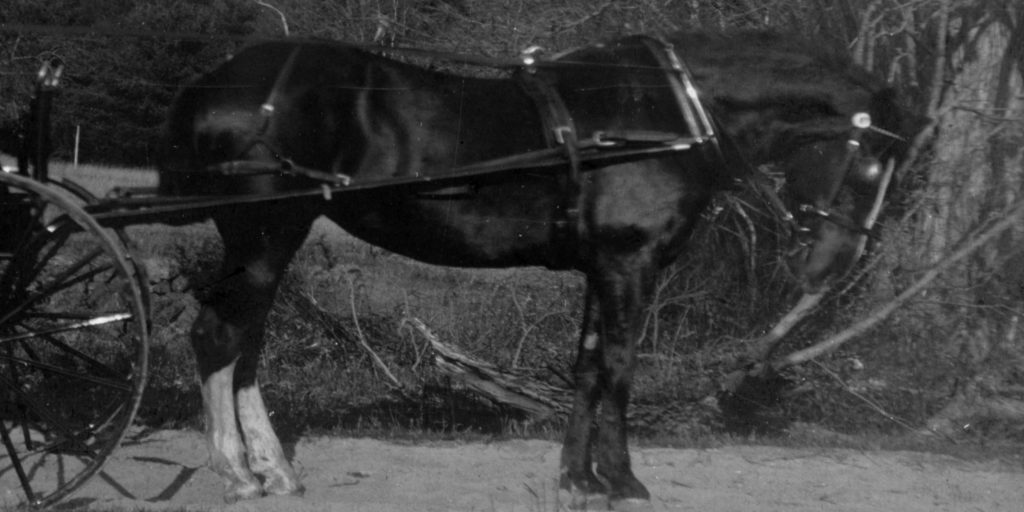 Sarah Orne Jewett House
Sarah Orne Jewett House
House Exterior, Barn, and Outbuildings
Family Compound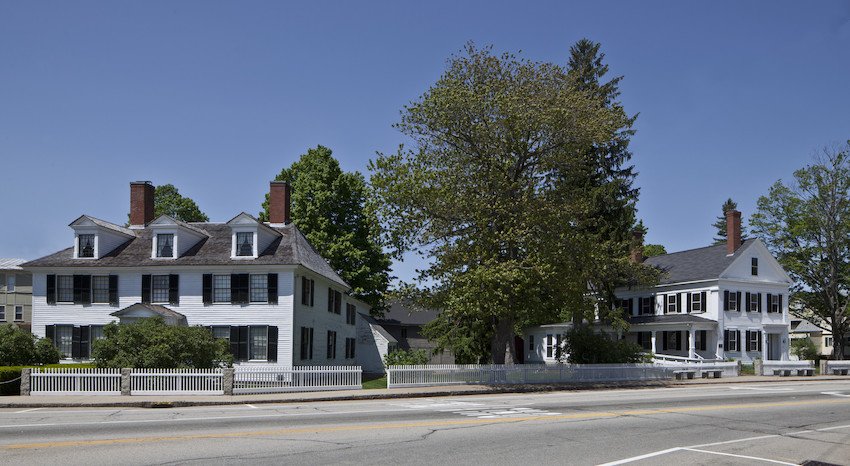
When John Haggens, the original homeowner, had the Georgian manse built, 1774-1780, it was the only residence on the site. Captain Theodore F. Jewett purchased the property from Haggens around 1830. Captain Jewett invited his son, Dr. Theodore H. Jewett, and his wife Caroline, to come live at the house. Sarah Orne Jewett was born in the Georgian house in 1849 two years after her sister Mary.
Five years later, Captain Jewett had built the Greek Revival on the right, to house the growing Jewett family.
Sarah grew up in the Greek Revival. When she was thirty-eight, Sarah and her sister Mary inherited the Georgian and moved in with their mother. Their younger sister, Carrie, who had married and given birth to a son, moved into the Greek Revival with her family.
The site was a family compound throughout most of Sarah’s life.
For Sarah growing up, her grandfather’s house was a place of stories—from the retired sea captain and Sarah’s step-grandmother Eliza, from a myriad of their guests, and from cooks and maids working in the house. Sarah’s imagination was stirred by objects in the house: the “power of china,” collected by four wives marrying in succession into the same house; a sideboard that wafted the aroma of cake and wine; and “… odd china figures and cup and vases, unaccountable Chinese carvings and exquisite corals and sea-shells, minerals and Swiss wood-work, and articles of ‘vertu’ from the South Seas.” (Sarah Orne Jewett, “Shore House,” 1873)
Captain Theodore F. Jewett
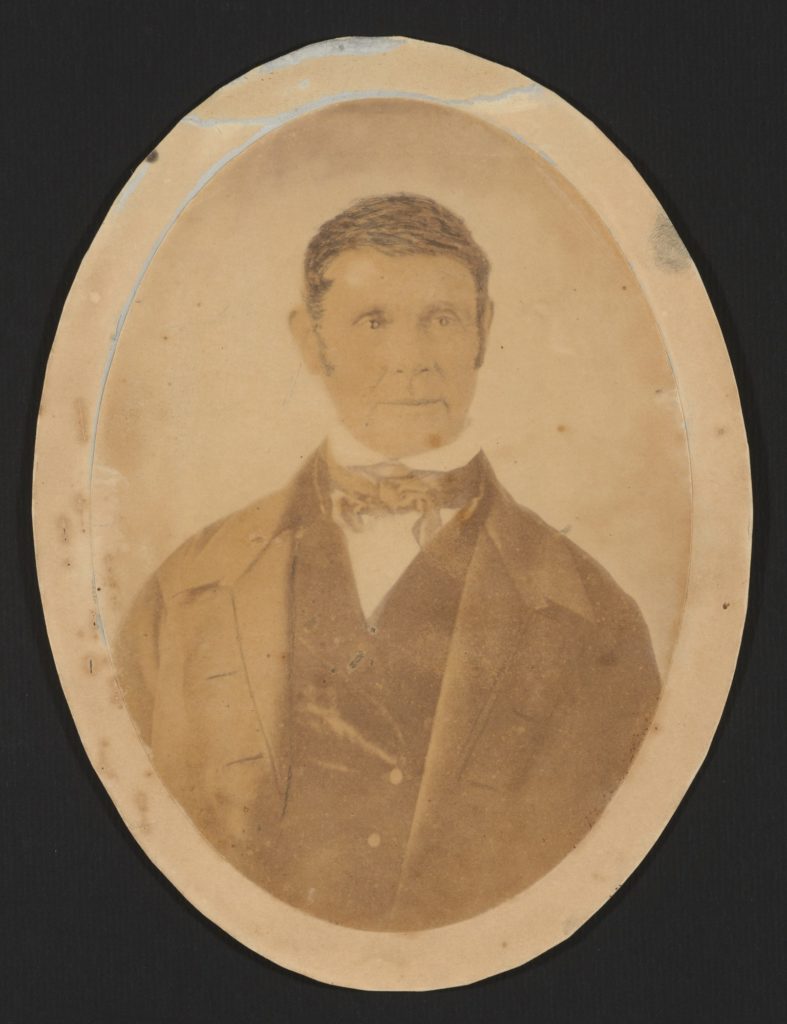
From her grandfather, Captain Theodore F. Jewett, Sarah would have heard stories of life at sea. Theodore F. Jewett ran away to sea when he was just a boy. As an adult, he became a sea captain, sailing ships laden with timber and other exports, likely fish, to the West Indies, where the crew unloaded cargo and loaded on rum and molasses—items directly involved with the trafficking of enslaved people. Assisted by his brother Thomas, Captain Jewett was involved in shipbuilding and opened a mercantile in town, selling West Indies goods such as molasses, sugar, coffee, and cocoa.
Captain Jewett and his brother Thomas Jewett became the wealthiest men in South Berwick. In 1819, Captain Jewett rented the house on the corner lot in South Berwick—the largest and grandest house in the middle of town—and by 1831, he owned the house.
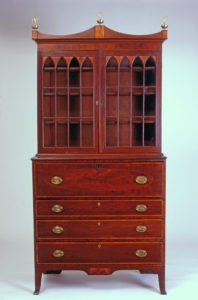 In the house, a Georgian manse built some fifty years prior, Captain Jewett had a desk—the same desk at which Sarah Orne Jewett would later write—on the second-floor hallway. From there, he could look out onto the town and to his mercantile store.
In the house, a Georgian manse built some fifty years prior, Captain Jewett had a desk—the same desk at which Sarah Orne Jewett would later write—on the second-floor hallway. From there, he could look out onto the town and to his mercantile store.
Captain Jewett married four times. Wife Sarah Orne Jewett, for whom the author was named, died at twenty-five. His second wife Olive Walker, the daughter of a sea captain, died at thirty-two. His third wife, Mary Rice Jewett, of whom Sarah’s sister is the namesake lived until 1854. She was the first of the grandfather’s wives whom Sarah knew, and to Sarah, she was quite intimidating. Captain Jewett married a fourth time, to Eliza Sleeper Jewett, his brother Nathan’s widow. Eliza survived Captain Jewett, living to Sarah’s young adulthood. With grandmother Eliza, Sarah found a friend and a font of stories.
Caesar
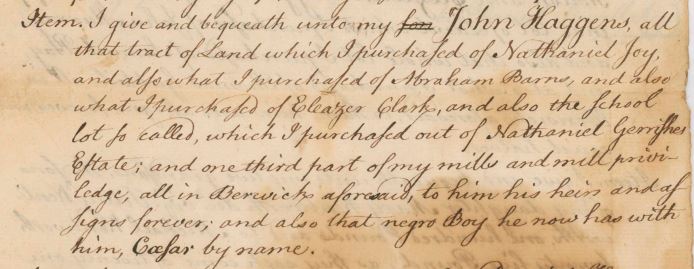
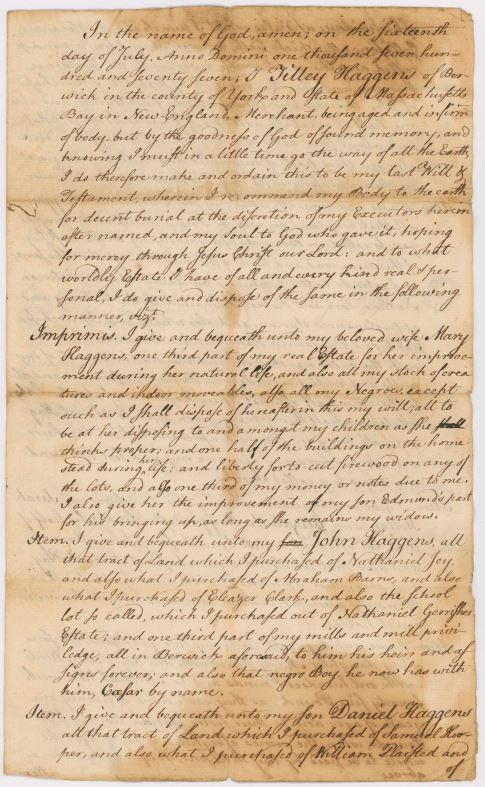 John Haggens was a son of Tilly Haggens (d. 1777) an Irish immigrant who settled in Berwick with his family, became a shopkeeper and bought up a good deal of land in the middle of what is now South Berwick.
John Haggens was a son of Tilly Haggens (d. 1777) an Irish immigrant who settled in Berwick with his family, became a shopkeeper and bought up a good deal of land in the middle of what is now South Berwick.
In his last testament and will, Tilly Haggens bequeathed four tracts of land and a third of his mills to John. In the same will and testament, Tilly Haggens bequeathed to his son John an enslaved person, Caesar.
As yet, nothing is known of Caesar. This is because few records were kept of enslaved people, and because enslaved people were robbed of their most personal possessions—their names, first names and surnames. There was a lot of crossover in names assigned to enslaved people, with names derived from myth, biblical references, and given as jokes—Caesar, Cato, Dinah, and Prince were all common names given to the enslaved.
John Haggens
John Haggens (1742-1822) was an entrepreneur-trader like his father. According to Old Berwick Historical Society, the tax census of 1798 lists him as one of the two wealthiest men in town.
 Between 1774 and 1780, Haggens built the house that would eventually belong to the Jewett family, and in which Sarah Orne Jewett was born. Wallpaper on the second floor of the house goes back to his ownership; this is documented by the king’s stamp on a section of the paper, proof that the paper was imported prior to American Independence.
Between 1774 and 1780, Haggens built the house that would eventually belong to the Jewett family, and in which Sarah Orne Jewett was born. Wallpaper on the second floor of the house goes back to his ownership; this is documented by the king’s stamp on a section of the paper, proof that the paper was imported prior to American Independence.
In 1901, Sarah Orne Jewett wrote the novel, A Tory Lover, set in South Berwick, on the eve of the American Revolutionary War. This historical fiction romance novel brings together fictional characters with actual people from the past. Tilly Haggens is a character in the book. Also a character in the book: Caesar, a Guinea prince who has been enslaved and works for Haggens.
Eastman House
Sarah Orne Jewett grew up in this Greek Revival house on the family compound and lived here full-time until she was thirty-three, when she began spending half the year with Annie Fields. She continued to live here part time until she was thirty-eight and inherited her grandfather’s house next door.
In 1931 the house was bequeathed to Historic New England by Sarah’s nephew, Dr. Theodore Eastman, Teddy, who had also spent his youth in this house.
Beginning in 1970, and for over forty years, the house served as the South Berwick Public Library, having been dedicated by a volunteer group, the Jewett-Eastman Memorial Committee, for this use.
In 2014, once again under Historic New England ownership, Eastman House opened as Sarah Orne Jewett Museum Visitor Center.
Carriage House and Barn
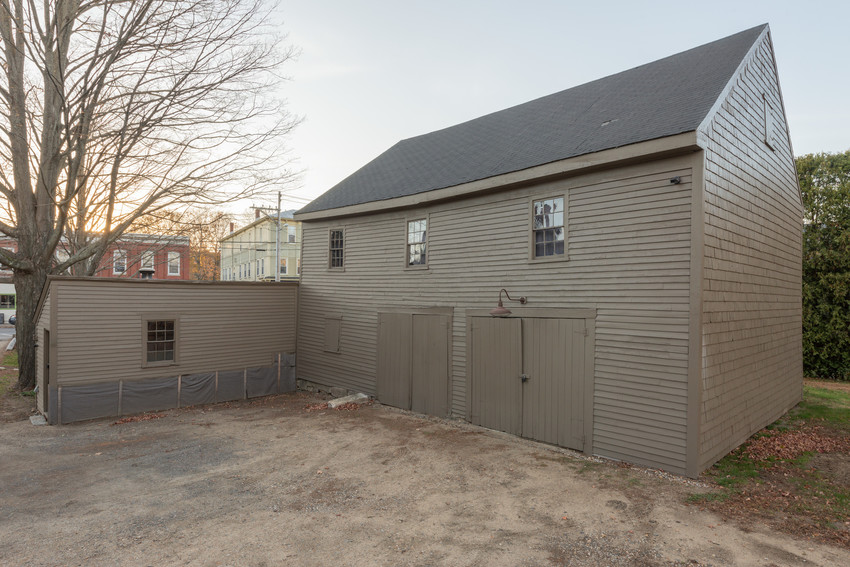
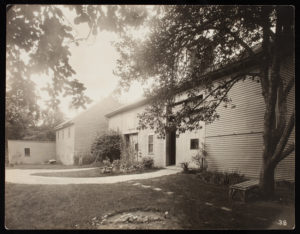 The outbuildings on the property have changed since Sarah’s grandfather, Captain Jewett, was first residing at the site in the 1820’s. A property map from that time shows that there was a barn, stable, cider house, and shed in the location of the carriage house.
The outbuildings on the property have changed since Sarah’s grandfather, Captain Jewett, was first residing at the site in the 1820’s. A property map from that time shows that there was a barn, stable, cider house, and shed in the location of the carriage house.
This 1931 photograph shows that in Sarah’s day, there was a sizeable stable to the right of the carriage house. Today, the carriage house, shed, and (not pictured), a well house remain. To the back of the shed, there is a one-hole privy, evidencing one important use for the outbuilding.
John Tucker
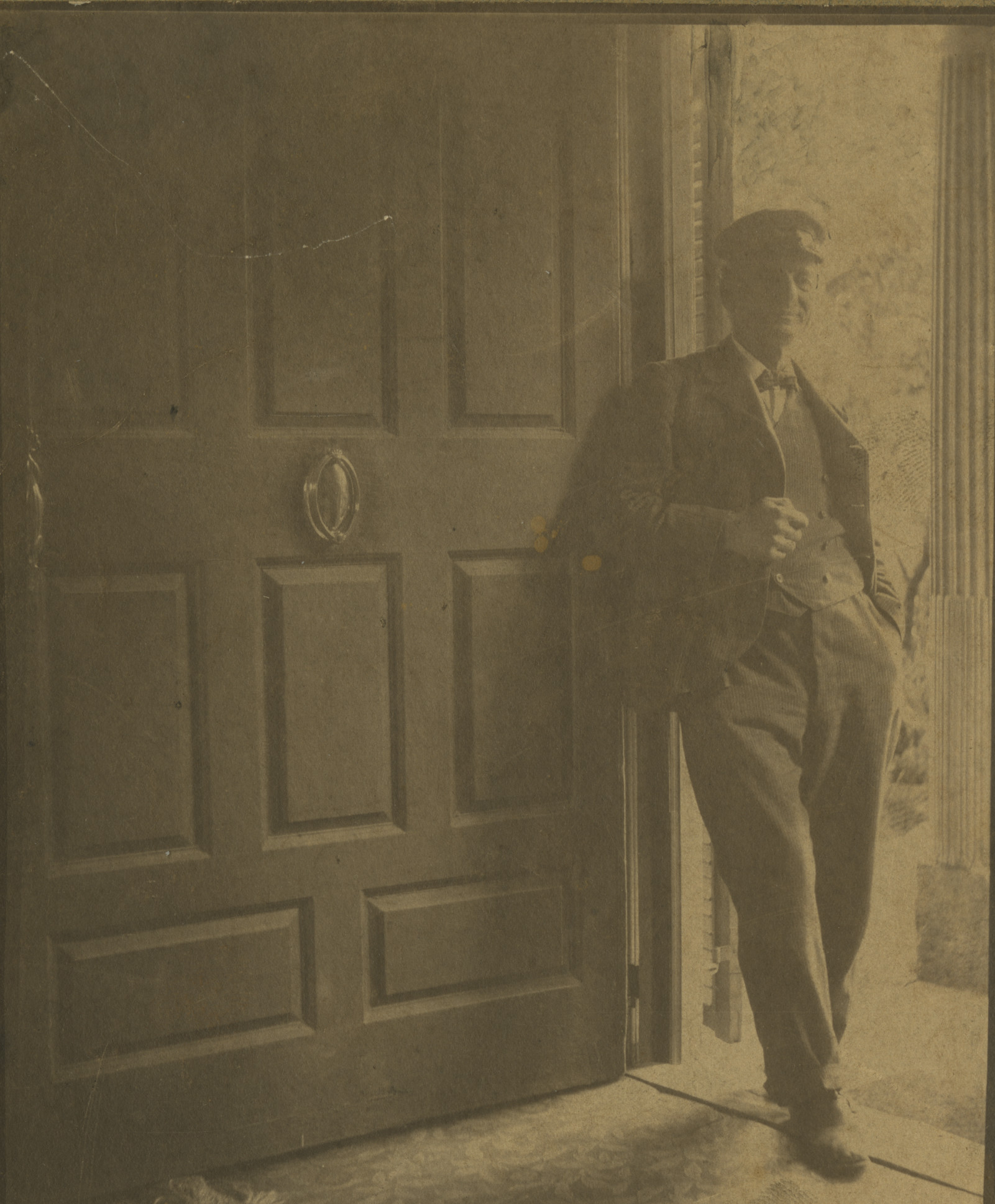 A Civil War veteran, John Tucker (1845-1902) was eighteen when he was gravely wounded at the Battle of Chancellorsville. In 1875, at age thirty, he went to work for Sarah’s father on a short-term commitment. He ended up staying with the family for the next twenty-seven years, until his death in 1902.
A Civil War veteran, John Tucker (1845-1902) was eighteen when he was gravely wounded at the Battle of Chancellorsville. In 1875, at age thirty, he went to work for Sarah’s father on a short-term commitment. He ended up staying with the family for the next twenty-seven years, until his death in 1902.
At the Jewett home, John Tucker had a host of responsibilities: meeting Sarah Orne Jewett at the train station; advising the Jewett sisters about the care of their beloved horses, road conditions, firewood, and straw supply; going along with Sarah as she explored pathways; taking the mail. He had once assisted Sarah’s father, Dr. Jewett, as he set a local boy’s broken leg.
In Sarah’s letters, his continuous presence is felt, and the family relied on him a great deal. In turn, he seems to have been treated as family. After her father died, Sarah wrote of being very fond of John Tucker and enjoying his company because it reminded her of the days when her father was alive.
With a wide range of responsibilities, John Tucker seemed to share Sarah’s affinity for her horses. The below is from a Jewett short story, but the character of John seems likely to be based on Tucker:
“I had mounted the corner of a grain-bin in the stable, and sat there swinging one foot and idly watching John, an old soldier and the master-of-horse, who was devoting an hour of leisure to the princess of the stable. She blinked her eyes in the spring sunlight that streamed in across the stable floor and lifted tenderly a forefoot that had once been lame. This foot was apt to draw attention to itself, as if former comfortable rubbings were still remembered. I could not disguise the truth, as I looked at her, that she was no longer young, but I flattered myself that she might be good for many years yet.
John brushed and smoothed her silky chestnut coat again and again, and carefully picked the few tangles out of her thin mane; flicked at her sharp ears, and then, holding her firmly by the nose, stood looking her full in the face with an abstract air. At last she gently moved and glanced round at an imaginary fly. She was full of feminine subterfuges; none of the other horses appealed as she did to John’s gallantry, and she gained many attentions and advantages beyond her rightful currycombing and rubbing down.” – Sarah Orne Jewett (“Peachtree Joe,” 1893)
Horses
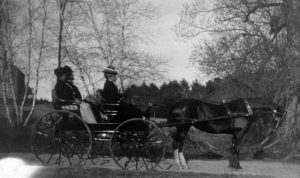
The Jewett sisters wrote with affection for and care about their horses. They sought advice from John Tucker on what particular horses needed at a given time. Fancy and Princess are just a few of the horses mentioned. There even seems to have been a family made-up word – pelters – for horses.
Sarah Orne Jewett liked to go for fast rides in the woods as an emotional vent. Her stories are populated with horses of all kinds, old and stiff; young and fast; one putting her head over a heroine’s shoulder in affection.
But Sarah connected especially with her horse Sheila.
